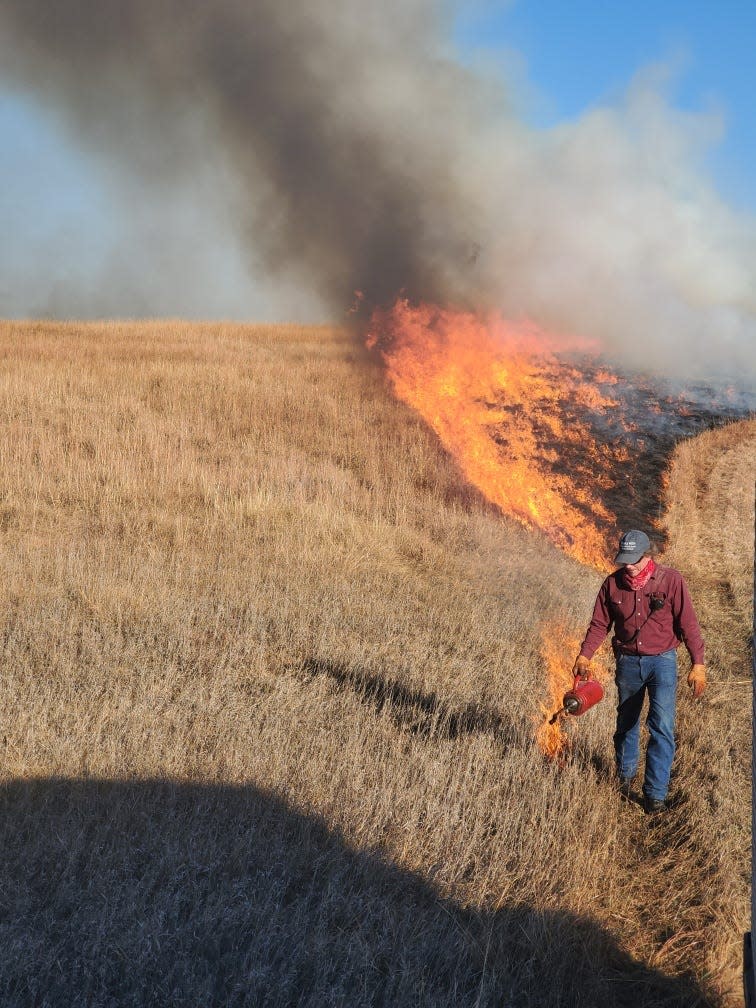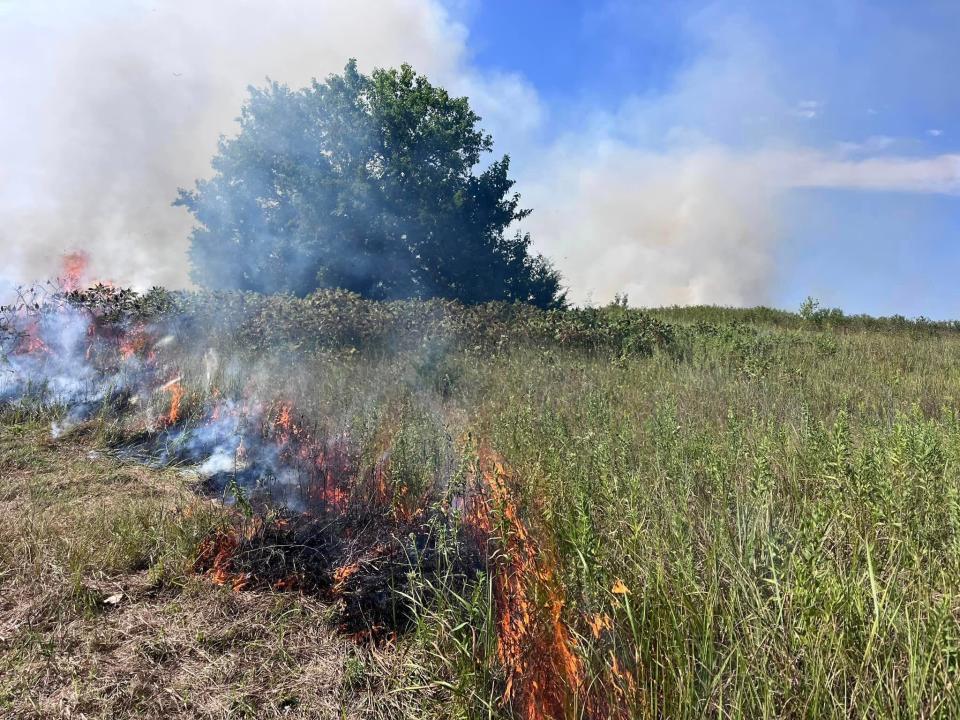Do you smell smoke in the air? That might be a prescribed burn in the area
In prairielands like Kansas, if there's a lot of smoke in the air, there's a good chance that a fire has started, but one organization wants the public to know that not all of these fires are wild.
The Smoky Hills Prescribed Burn Association (PBA) has grown to around 45 members in its three years of existence in north central Kansas. Its main purpose is the promotion, assistance and education on the safe and responsible use of fire as a management tool and to be a resource to assist landowners and land managers with the necessary means to organize and conduct prescribed burns.
While landowners and managers may understand the importance of controlled burning as a way to maintain the health of their land, they may not have the necessary tools, or people, to do it on their own, which is where PBAs can come in to help.
"The formation of the PBA provides you with three things," said Paul Finnell, founder and president of the Smoky Hills PBA. "You get the manpower... the equipment and the knowledge."

The benefits of prescribed burning
Finnell said prescribed burning is a necessary and beneficial tool for several reasons, not only for the landowner, but for society as a whole.
One of those reasons is the improvement in the health of prairie grass.
"The way prairie grass grows is in a bunch," Finnell said. "When the grass grows up it, if it's not removed, the dead debris falls and the grass collapses upon itself. That material falls down into the middle...and nothing inside grows."
By periodic burning, usually every three to five years, the grass, along with that dead debris, is able to burn off and regrow more effectively.
Finnell said for people like him who raise cattle and other livestock that feed on these prairies, burning is also benefiting their livestock, as nutrients from the burn are reintroduced into the soil.
"The protein content in that grass after a burn is the highest that you can get," Finnell said. "For me as a cattleman, that's great, because you get the highest gains off high-protein grass."
Another benefit to prescribed burning is the reduction of flammable materials in the prairies, including controlling invasive woody species.
"Recently, it has become more about reducing the fuel load as a way to reduce wildfires," Finnell said.
Without that fuel, the chances and likelihood of wild and uncontrolled fires in the area are reduced too.
Finally, prescribed burns can help to keep invasive species from encroaching on native prairielands, such as the eastern redcedar, which Finnell said has seen an increase in the volume of growth by more than 23,000% since 1965.
Prescribed burns are planned and conducted under strict conditions

To do a prescribed burn with the Smoky Hills PBA, landowners and land managers don't just call them up and light a fire the next day. There are protocols and plans that are put in place first.
The first thing that needs to be done is to have a burn plan or "prescription" created. Finnell said Smoky Hills PBA contracts with the Natural Resources Conservation Service (NRCS) to create a plan.
"(They) will go out to your place...go over the land and discuss your management goals and why you're burning," Finnell said.
The NRCS will then write up a burn plan, which is submitted to the PBA which will begin looking at the conditions that are needed to conduct that burn, something that might not happen for weeks or even months.
Each prescribed burn has to have a "fire boss," someone who has experience in controlled burns and will be in charge of safely conducting the burn. The boss will look at conditions including weather forecasts to determine when a good time to burn is, with wind direction being one of the most important aspects.
"(The boss) will look at one or two weeks out and identify what a potential day or window of opportunity to burn," Finnell said.
After determining a possible day or days that a burn could take place, the boss will send the plan to Finnell, who will let the rest of the PBA know that help will be needed for that burn, and to contact the landowner or manager if they can help.
"Weather conditions do change, so (the fire boss) has to notify the contacts of changes," Finnell said.
Every burn with the PBA has to be conducted under certain conditions. For instance, there needs to be projected winds between 7 mph and 15 mph and relative humidity between 30% and 70%. If these conditions aren't met, the burn won't happen.
"We are safety-first minded," Finnell said. "We make sure to follow the burn plan."
On the day of the burn, Finnell said there is typically at least eight people on site, conducting the burn in a safe manner, but with one key person responsible for the initial burn.
"The landowner has to start the initial fire," Finnell said. "There's no ifs, ands or buts about it, because the landowner holds the liability."
Smoky Hills Prescribed Burn Association open to anyone interested
Finnell said one of the biggest things that he wants is for people to have more knowledge about prescribed burning and what the association does, particularly as the season begins.
"People are going to start seeing burns," Finnell said.
While many of the Smoky Hills PBA members are the very landowners and land managers that are looking to do prescribed burns, anyone is open to joining the association.
"We just have to get rid of the fear of burning," Finnell said. "(A lot of) people think fire is bad, but we're trying to promote that fire is good for the ecosystem. If we're going to maintain this native prairieland, we have to do it."
For those interested in taking part in the Smoky Hills PBA, more information can be found on Facebook at www.facebook.com/SmokyHillsPBA. Additionally, Finnell can be contacted at paul_finnell@yahoo.com or 785-577-7064.
This article originally appeared on Salina Journal: Smoky Hill Prescribed Burn Association on importance of controlled burns

